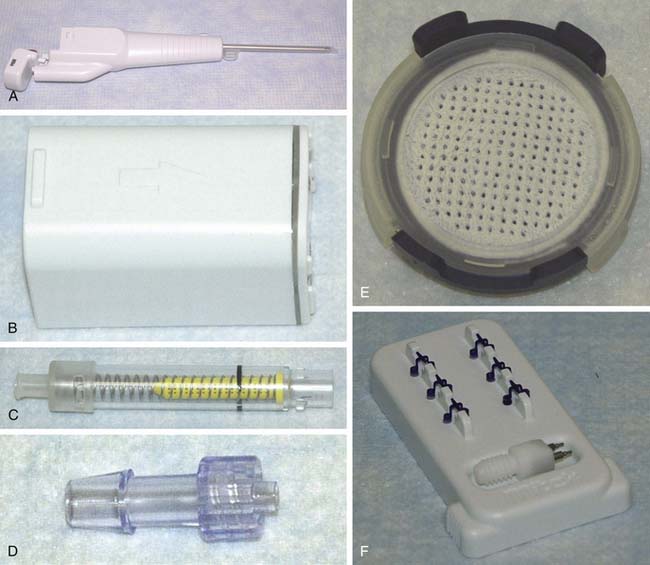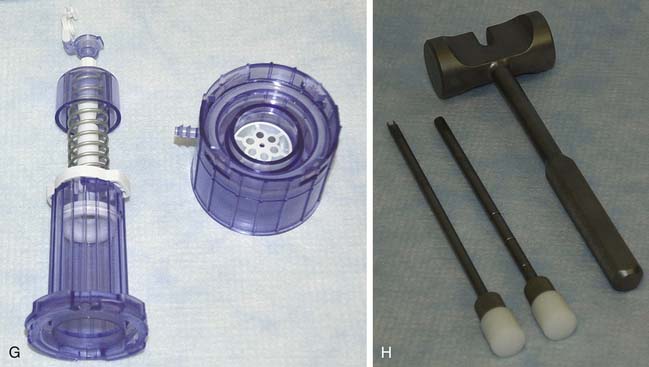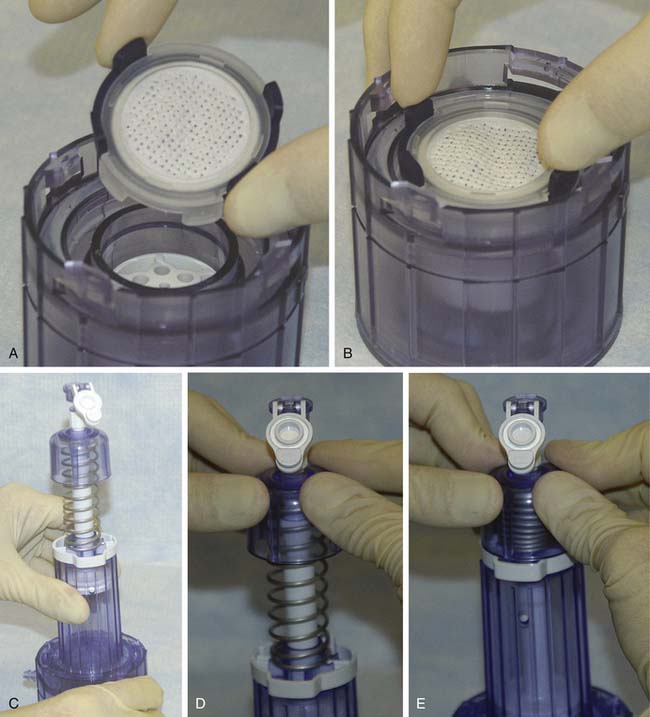Chapter 11 Cartilage Fragment Implantation
Introduction
Similar to autologous chondrocyte implantation (ACI) techniques, CAIS results in chondrocyte-based tissue repair but does not require ex vivo isolation and culture expansion of the cartilage tissue biopsy. Rather, donor cartilage is morselized in situ into small fragments using a customized harvesting device. The resulting increase in surface area of the cartilage fragments promotes cell outgrowth and expansion of the chondrocytes incarcerated within the dense cartilaginous matrix. Fragments are then incorporated on a chondro-conductive scaffold and affixed in the lesion site using bioresorbable staples in a single-stage procedure.1,2
Technical Overview (Knee Joint)
The CAIS procedure requires the utilization of two single-use items (a CAIS harvester and a disperser) and two implantable devices (a CAIS scaffold implant and staples) (Fig. 11-1, A-H).
CAIS Harvester
The CAIS harvester is a single-use device with a battery-operated motor. The harvester tip, with the aid of surgical vacuum, directs the morselized cartilage mixed with irrigation fluids into a tissue collector.
Harvest and Collection of Cartilage Fragments
The CAIS disperser is prepared by placing the CAIS scaffold into the bottom of the disperser with the clear side of the cartridge ring facing up and the blue side facing down. The top tube is then assembled to the disperser base using alignment arrows and rotating clockwise to a hard stop. The disperser spring is then compressed by depressing the disperser cap until an audible click is heard (Fig. 11-2, A-E).
< div class='tao-gold-member'>
Stay updated, free articles. Join our Telegram channel

Full access? Get Clinical Tree











